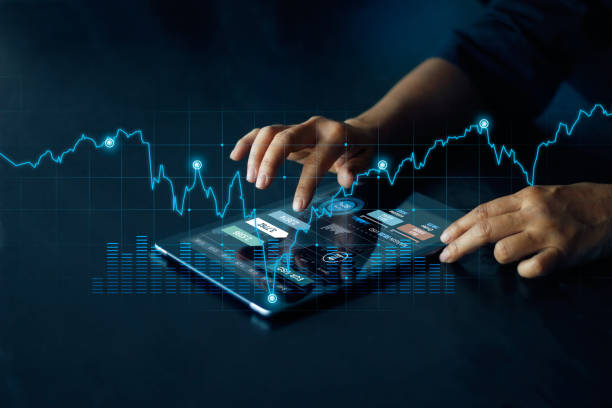
The financial world is rapidly evolving, and at the heart of this transformation are digital assets cryptocurrency — a broad category that includes everything from cryptocurrencies like Bitcoin to non-fungible tokens (NFTs), digital securities, and more.
In this article, we'll break down what digital assets are, how cryptocurrency fits in, and why these innovations are reshaping the global economy. Whether you're a beginner or a seasoned investor, it’s time to understand the digital gold rush. 🚀
🧠 What Are Digital Assets?
A digital asset is anything that exists in a digital format and holds value. This can include:
- 💰 Cryptocurrencies like Bitcoin, Ethereum, and Solana
- 🎨 NFTs (Non-Fungible Tokens) — digital art, collectibles, gaming assets
- 🗃️ Tokenized real-world assets — real estate, stocks, or commodities on blockchain
- 🔐 Security tokens — regulated digital investment contracts
- 📁 Data & Intellectual Property in tokenized forms
What makes them valuable? Ownership is recorded on a blockchain — a decentralized, secure digital ledger — providing transparency, immutability, and trust without the need for middlemen.
💸 Cryptocurrency: The Core of Digital Assets
Cryptocurrency is the most well-known type of digital asset. It’s a form of digital money that uses cryptography for security and operates on blockchain networks.
🔑 Key Features of Cryptocurrency:
- Decentralized: No central authority controls the network
- Limited Supply: Many cryptocurrencies (like Bitcoin) have caps to prevent inflation
- Transparent: All transactions are public and verifiable on the blockchain
- Peer-to-Peer: Transactions can occur directly between users without banks
🌟 Types of Cryptocurrencies
🪙 1. Bitcoin (BTC)
- The original and most valuable cryptocurrency
- Designed as a digital store of value (like digital gold)
- Limited supply: 21 million coins
⚙️ 2. Ethereum (ETH)
- A decentralized platform for smart contracts and dApps
- Powering NFTs, DeFi, and tokenized assets
- Transitioned to Proof of Stake (PoS) for energy efficiency
💵 3. Stablecoins (e.g., USDT, USDC)
- Pegged to fiat currencies like the US dollar
- Provide stability for trading and DeFi applications
🌐 4. Utility & Governance Tokens (e.g., SOL, UNI, MATIC)
- Used to pay for network fees, participate in governance, or access specific features in decentralized platforms
🏦 How Are Digital Assets Used?
Digital assets are changing how we interact with value online. Here’s how they’re being used:
🎮 1. Gaming and Metaverse
- NFTs represent in-game items, skins, and virtual land (e.g., in Axie Infinity or Decentraland)
- Players can own and trade digital property
💼 2. Finance and DeFi (Decentralized Finance)
- Platforms like Uniswap and Aave let users trade, borrow, or earn interest without banks
- Smart contracts eliminate intermediaries and reduce costs
🖼️ 3. Digital Art and Collectibles
- Artists mint NFTs to sell unique digital artworks globally
- Ownership is tracked transparently on the blockchain
🏘️ 4. Real Estate and Physical Asset Tokenization
- Properties or commodities can be tokenized into tradable digital shares
- Enables fractional ownership and easier global investment
🔐 Benefits of Digital Assets
✔️ Ownership and Control
You have full control over your assets — no bank can freeze your crypto wallet.
🚀 Accessibility
Anyone with an internet connection can create, buy, or sell digital assets globally.
🔁 Liquidity
Digital assets can be traded 24/7 on global exchanges, unlike traditional markets.
🧩 Interoperability
Many digital assets are built to work across different platforms (especially with Web3).
⚠️ Risks and Considerations
While digital assets bring innovation, they’re not without risk:
📉 Volatility
Crypto markets are highly volatile — prices can swing dramatically.
🛡️ Security
You must safeguard your private keys and wallets. Hacks and scams are common in poorly secured systems.
🧾 Regulation
Laws vary by country and are still evolving. Some assets may face regulatory scrutiny.
🧪 Technological Complexity
The learning curve can be steep, especially with advanced DeFi tools or crypto wallets.
🪙 How to Invest in Digital Assets
Step 1: Choose a Platform
Use reputable exchanges like:
- Binance
- Coinbase
- Kraken
- Bitget
- eToro
Step 2: Create a Wallet
- Use hot wallets like MetaMask or Trust Wallet for convenience
- Use cold wallets (hardware wallets) like Ledger or Trezor for maximum security
Step 3: Diversify
Invest across different assets (e.g., BTC, ETH, NFTs, DeFi tokens) to reduce risk.
Step 4: Learn Continuously
Follow crypto news, join forums, and take courses to stay informed.
🔮 The Future of Digital Assets
Digital assets are poised to redefine how we perceive and use money, art, identity, and even governance.
Coming Trends:
- CBDCs (Central Bank Digital Currencies): Government-backed digital currencies
- Tokenized Everything: Stocks, music rights, tickets — all tradable digitally
- Web3 Integration: Digital assets will be the backbone of decentralized internet platforms
Governments, institutions, and tech giants are all entering the space, signaling long-term legitimacy.
✍️ Final Thoughts
Digital assets and cryptocurrencies are more than just tech trends — they’re the building blocks of a new digital economy. As innovation accelerates, understanding these assets becomes not just valuable, but essential.
Whether you're investing, building, or just exploring, this is your time to learn, engage, and prepare for a more open, decentralized financial future. 💡🔗
Ready to start your journey into digital assets? Do your own research, secure your investments, and dive into the future of finance!





Comments